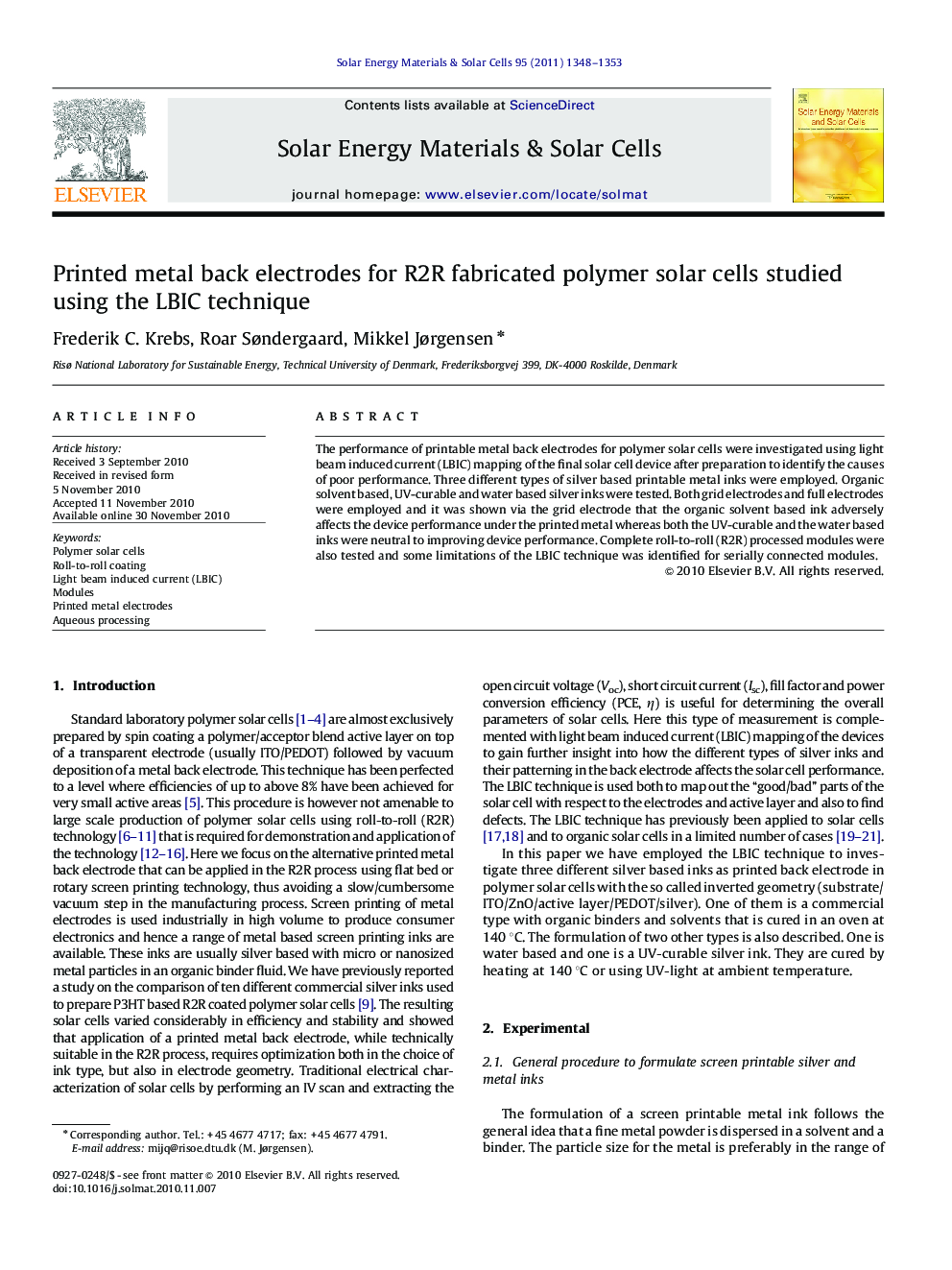| Article ID | Journal | Published Year | Pages | File Type |
|---|---|---|---|---|
| 79059 | Solar Energy Materials and Solar Cells | 2011 | 6 Pages |
The performance of printable metal back electrodes for polymer solar cells were investigated using light beam induced current (LBIC) mapping of the final solar cell device after preparation to identify the causes of poor performance. Three different types of silver based printable metal inks were employed. Organic solvent based, UV-curable and water based silver inks were tested. Both grid electrodes and full electrodes were employed and it was shown via the grid electrode that the organic solvent based ink adversely affects the device performance under the printed metal whereas both the UV-curable and the water based inks were neutral to improving device performance. Complete roll-to-roll (R2R) processed modules were also tested and some limitations of the LBIC technique was identified for serially connected modules.
Graphical abstractLBIC and optical images of an all printed polymer solar cell.Figure optionsDownload full-size imageDownload as PowerPoint slideResearch Highlights► Light beam induced current (LBIC) mapping of printed OPV devices enables identification of defects. ► Investigation of printed silver formulations reveal minimum damage to the active layer with UV-curable and water based screen printable silver formulations. ► Roll-to-roll coated and printed polymer solar cell module defects were easily identified using LBIC.
